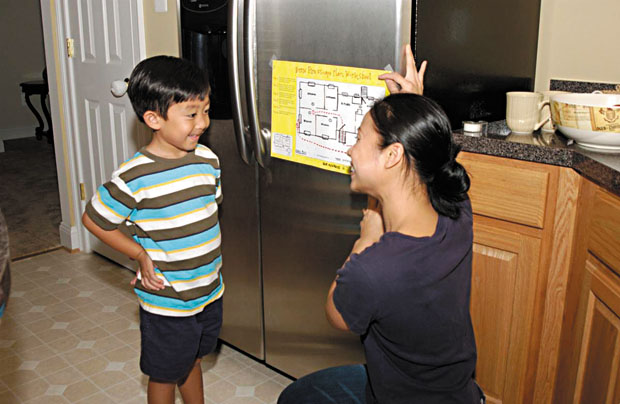Top tips to prevent child injuries at home
Home is where the heart is, and for most people, it’s where they feel safest. Yet for children, the home isn’t as safe as you might assume. In fact, you may be surprised to learn that 3.5 million children go to the emergency room every year for injuries that happen in homes.
Some parents unintentionally are putting their children at risk by making common mistakes in the home. For example, parents say they are worried about fire safety and 96 percent report they have a smoke alarm, yet 14 percent never check their smoke alarm battery, according to “Report to the Nation: Protecting Children in Your Home,” from Safe Kids Worldwide and Nationwide.
“Parents just can’t imagine a tragedy could happen to them, but it happens far too often,” said Safe Kids Worldwide president and CEO Kate Carr. “Sadly, 2,200 kids die from an injury in the home every year. The good news is that we know how to prevent these injuries, and parents can take simple steps to protect their kids.”
Safe Kids Worldwide teamed up with Nationwide and its Make Safe Happen program to help families keep kids safe in the home. “We know parents want to protect their children,” said Nationwide’s executive vice president and chief marketing officer Terrance Williams. “It’s our hope that by bringing this information to families and caregivers, we can help them protect what matters most.”
Here are tips to make your home kid-safe, so you can avoid preventable injuries:
• Make sure there is a working smoke alarm and carbon monoxide alarm on every level of your home, especially near sleeping areas. Test the batteries every month.
• Create and practice a home fire escape plan with your family, and know two ways out of every room in case of a fire.
• Give young children your full and undivided attention when they are in and around water. Only one percent of parents list drowning as a concern, according to the Safe Kids report, yet every week a child dies from drowning in a bathtub.
• For young children, use safety gates at the top and bottom of the stairs, attaching them to the wall if possible.
• Keep cribs clear of toys and soft bedding, and make sure that babies sleep alone, on their backs and in a crib every time they sleep. For children under the age of one, suffocation is the leading cause of injury-related death.
• Keep all medicine up and away, out of children’s reach and sight. Think about places where kids get into medicine, like in purses, on counters and on night-stands.
• Store all household cleaners, liquid laundry packets and other toxic products out of children’s reach and sight. Use cabinet locks to prevent young children from getting into products that may cause them harm.
• Save the Poison Help line number into your phone and post it in your home where anyone easily can find it in an emergency: 1-800-222-1222.
• Secure flat-panel TVs by mounting them to the wall, and place box-style TVs on a low, stable piece of furniture.
• Properly install window guards or stops to help prevent falls from windows. Each year, 3,300 children are injured falling out of a window, yet 70 percent of parents say they have never used window guards or stops that prevent these falls.
To learn more, visit SafeKids.org or MakeSafe-Happen.com.
This article is courtesy of Brandpoint.
